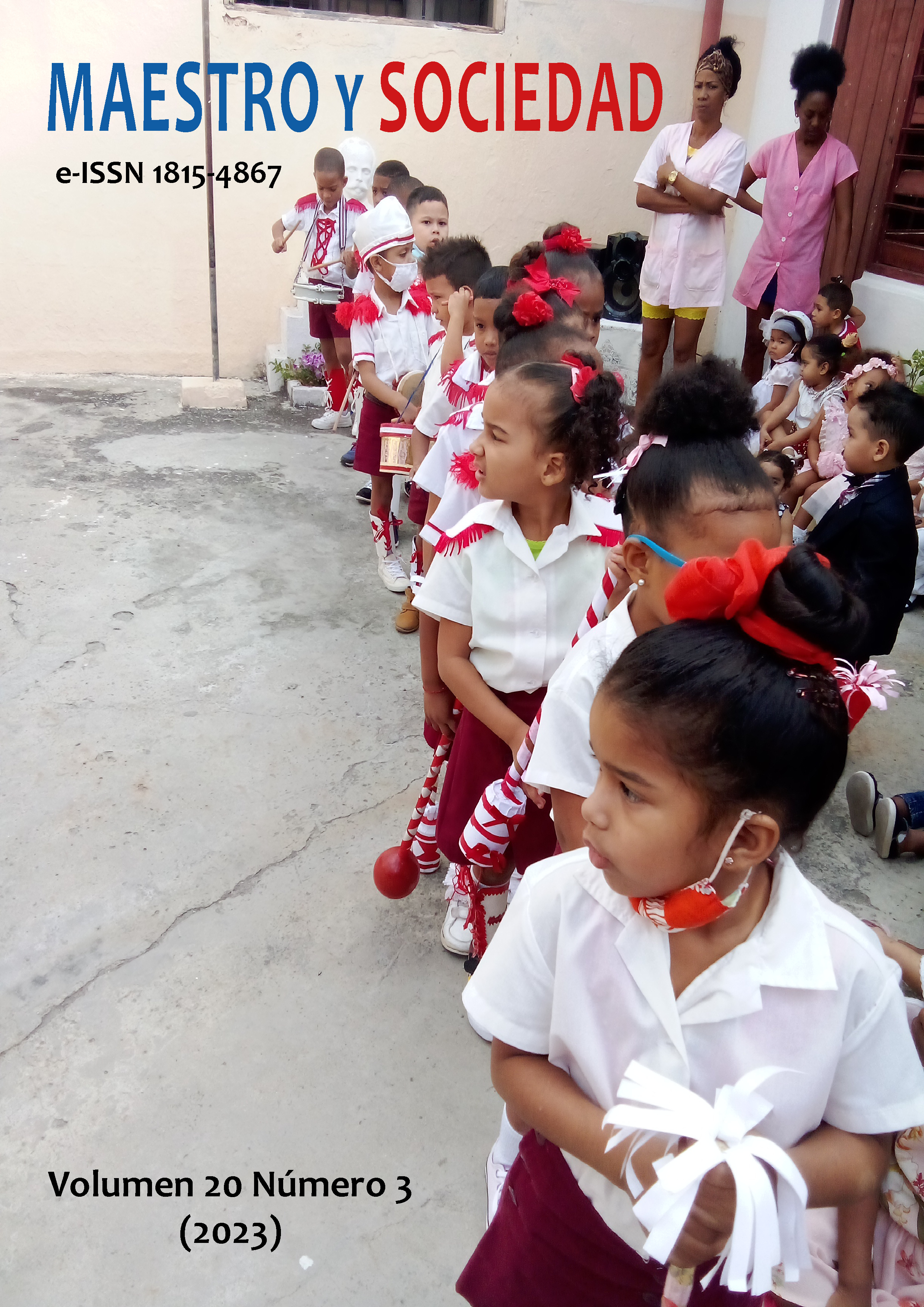Didactic strategies for the attention of students with special educational needs of the Educational Unit "Pedro Fermín Cevallos"
Didactic strategies for the attention of students with special educational needs of the Educational Unit "Pedro Fermín Cevallos"
Keywords:
Didactic strategies, Special Educational Needs, teaching, learning, alternativeAbstract
Introduction: Inclusive teaching strategies refer to any number of teaching approaches that address the needs of students with a variety of backgrounds, learning modalities, and abilities. Materials and methods: In the Educational Unit "Pedro Fermín Cevallos" a study was carried out on the didactic strategies used by teachers for the learning of children with special educational needs, which were included in regular education at the request of the Ministry of Education, for whom a proactive critical survey was carried out, in which the educational reality received by students with functional diversity was analyzed. Results: An alternative solution was extended through the elaboration of the "Guide to didactic strategies for the attention of students with SEN of the EGB sublevel of the Educational Unit "Pedro Fermín Cevallos", School Period 2021-2022", which served as a tool for the teacher to strengthen and develop the abilities, skills and attitudes of those who participated effectively and affectively in face-to-face and extracurricular activities, their quality of life for a better cognitive or affective and social performance. Discussion: The strategies contribute to an overall inclusive learning environment in which all students are perceived to be valued and capable of success. Conclusions: The corresponding programmatic adaptations were made according to the degree of affectation that each student had and in collaboration with directors, teachers, parents and the entire educational community to achieve a quality and warm education for those children who were considered productive units of society in the future.
References
Al Hout, R. (2017). Cómo incluir a los niños con necesidades educativas especiales y discapacidades. https://www.britishcouncil.org/voices-magazine/how-include-children-special- educational-needs-and-disabilities
Calle, T. (2021). La educación inclusiva en Ecuador Aplicabilidad durante la virtualidad en el nivel inicial. https://revistas.unlp.edu.ar: https://revistas.unlp.edu.ar/OrientacionYSociedad/article/download/12363/11167/
Díaz, L. (2017). Educación inclusiva. conceptualización y aproximación al sistema educativo de Sinaloa. https://www.comie.org.mx: https://www.comie.org.mx/congreso/memoriaelectronica/v14/doc/2209.pdf
Fernández, J. (2017). Educación inclusiva. Construyendo caminos para avanzar. http://www.scielo.org.pe: http://www.scielo.org.pe/scielo.php?script=sci_arttext&pid=S2223- 25162017000100001
Laparra, A. (2021). Técnicas de enseñanza para la inclusión de estudiantes con necesidades educativas especiales, en educación superior del departamento de Sololá. https://revista-cientifica-internacional.org: https://revista- cientifica-internacional.org/index.php/revista/article/view/44/114
LOD. (2012). Ley Orgánica de Discapacidades. https://www.consejodiscapacidades.gob.ec
Mendoza, D. (2018). Estrategias didácticas para el fortalecimiento del proceso lector a nivel andragógico. https://revistas.uide.edu.ec: https://revistas.uide.edu.ec/index.php/innova/article/view/403/59
Montoya, A. (2021). Educación inclusiva. ¿Cómo estamos? Revista Innova Educación, 20.
Morales, G. (2018). Estrategias incluyentes para atender la diversidad educativa de 6to. Año de EGB de la Unidad Educativa “Pérez Pallares”, con énfasis en las dificultades sensoriales. https://repositorio.uasb.edu.ec/: https://repositorio.uasb.edu.ec/bitstream/10644/6046/1/T2538-MIE-Morales-
Plancarte, P. (2017). Inclusión educativa y cultura inclusiva. https://dialnet.unirioja.es/descarga/articulo/6545223.pdf
Quintero, L. (2020). Educación Inclusiva: Tendencias y Perspectivas. https://revistas.uptc.edu.co/index.php/educacion_y_ciencia/article/view/11423
Unesco. (1994). La Declaración de Salamanca y Marco de Acción sobre Necesidades Educativas Especiales. Conferencia Mundial sobre Necesidades Educativas Especiales: Acceso y Calidad. Unesco.
Velarde, L. (2020). Estrategias didácticas para la enseñanza y difusión de la investigación. http://portal.amelica.org
Downloads
Published
How to Cite
Issue
Section
License
Copyright (c) 2023 Karen del Rosario Lara Alvarez, Leida Karina Barco Cepeda, Margarita Luzmila Anchundia Meza, María Gabriela Paredes Macias

This work is licensed under a Creative Commons Attribution-NonCommercial-NoDerivatives 4.0 International License.
This journal provides immediate open access to its content, based on the principle that offering the public free access to research helps a greater global exchange of knowledge. Each author is responsible for the content of each of their articles.



























 Universidad de Oriente
Universidad de Oriente 